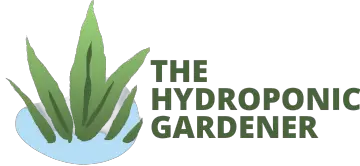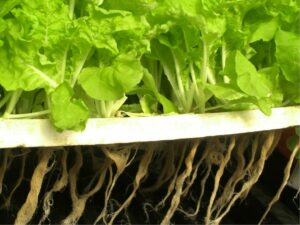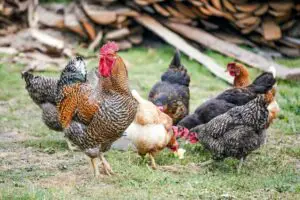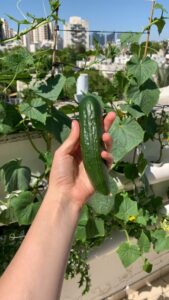Can you grow hydroponics without a growing medium? The answer is yes! Hydroponic gardening allows plants to be grown in water or nutrient-rich solutions instead of soil, and you can do it without using any growing medium.
This type of gardening has been around for centuries, but it’s becoming increasingly popular as an efficient and sustainable way to grow food. In this article, we’ll discuss the benefits and challenges of growing hydroponics without a growing medium and how you can get started on your own hydroponic garden.
So if you’re curious about this unique gardening method, read on to learn more!
What is a growing medium?
Also known as a substrate, a growing medium refers to a material or substance used to support the roots of plants and provide stability. Unlike traditional soil-based gardening, hydroponics relies on a soilless system where plants receive their nutrients directly from a water-based solution.
The role of a grow medium in hydroponics is primarily to anchor the plants securely in place, ensuring that the root system has proper support. It also facilitates the distribution of water, oxygen, and nutrients to the roots. This helps to maintain an optimal growing environment.
Additionally, a grow medium can serve as a buffer, helping to regulate moisture levels and prevent waterlogged conditions that may lead to root rot.
Common Types of Growing Medium
Various types of grow media are used in hydroponics, each with unique characteristics and suitability for different growing systems. Some commonly used grow media include:
1. Rockwool
Rockwool, made from molten rock, is spun into fibers and compressed into cubes or slabs. These cubes or slabs are a base for plants in hydroponic systems. Rockwool also has a neutral pH, which means it won’t affect the nutrient balance in the hydroponic system. This makes it easier to maintain the correct nutrient levels for the plants.
2. Coco Coir
Coconut coir is another common growing medium used in hydroponics. It is made from the fibers found in the outer husk of coconut shells and is a popular alternative to peat moss, often used as a soil amendment.
Coco coir has excellent moisture retention while allowing for good drainage, pH-neutral, won’t affect nutrient balance in the system, is resistant to disease and pests, and it’s sustainable and environmentally friendly.
3. Perlite
Perlite is a lightweight and porous growing medium from volcanic glass heated to high temperatures. Perlite provides excellent aeration to plant roots. It has a porous structure which allows for good airflow and drainage. This helps prevent problems such as waterlogging and root rot.
When using perlite, have proper irrigation and fertilization since it doesn’t retain water well. It may require more frequent watering compared to other growing media. Additionally, because perlite is relatively low in nutrients, it may be necessary to supplement it with additional fertilizers to ensure optimal plant growth.
4. Clay Pellets
Clay pellets, also known as hydroton, provide excellent drainage and aeration to plant roots. Their porous structure allows for good airflow around the roots, which can help prevent problems such as waterlogging and root rot.
Clay pellets are also pH-neutral, so that they won’t affect the nutrient balance in the hydroponic system. They are reusable and can be cleaned and sterilized between growing cycles.
5. Oasis Cubes
Oasis cubes, also known as foam cubes or floral foam, are commonly used in hydroponics for starting seeds and rooting cuttings. They are made from a water-absorbent foam material that provides excellent support and moisture to young plants.
One of the main advantages of oasis cubes is their ability to retain moisture and provide excellent water absorption to plant roots. This can be particularly useful for young plants that require consistent hydration for healthy growth.

Advantages of growing without a medium
Growing without a medium, known as “water culture” or “nutrient film technique,” eliminates the need for a physical growing medium.
Instead, the plant roots are suspended directly in a nutrient-rich solution, allowing them to absorb water and nutrients directly from the water. Some of the key advantages of growing without a medium in hydroponics include:
1. Enhanced nutrient uptake
Without a growing medium, plants have direct access to the nutrient solution. This allows for more efficient and rapid uptake of essential nutrients, as the roots are in direct contact with the water and nutrients.
2. Improved oxygenation
Growing without a medium increases oxygen availability to the roots. Oxygen is crucial for root respiration and nutrient absorption. Without a growing medium, the roots have increased access to oxygen, promoting healthier growth and reducing the risk of root diseases caused by inadequate oxygen levels.
3. Reduced the risk of pests and diseases
Growing without a medium can minimize the risk of pests and diseases associated with soil or organic substrates. You also reduce the need for pesticides or other chemical treatments since soilborne pathogens and pests won’t survive.
4. Water conservation
Hydroponic systems without a growing medium rely on recirculating systems, which reuse the nutrient solution, conserving water by continually circulating it and reducing overall consumption compared to traditional soil-based gardening.
5. Increased control and precision
Growing without a medium allows precise control over nutrient composition, pH levels, and other environmental factors. It enables growers to tailor the nutrient solution precisely to the needs of the plants, optimizing growth and maximizing yields.
6. Space efficiency
Soilless hydroponic systems without a growing medium are often more space-efficient than traditional gardening methods. Without the need for soil or bulky growing media, hydroponic setups can be designed to efficiently use vertical space, making them suitable for urban or limited-space environments.
7. Ease of maintenance
Hydroponic systems without a growing medium are generally easier to maintain and clean. There is no need to replace or amend the growing medium, reducing labor and costs associated with medium management.
8. Faster growth and higher yields
With improved nutrient availability, oxygenation, and environmental control, plants grown without a medium often exhibit faster growth rates and can produce higher yields than traditional soil-based cultivation.

Drawbacks of growing hydroponics without a growing medium
While growing without a medium in hydroponics offers several advantages, there are also some disadvantages to consider:
1. Lack of physical support
Without a growing medium to provide physical support, plants grown without a medium may be more prone to instability. They may require additional structures or support mechanisms to prevent them from falling or bending.
2. Limited buffer for nutrient fluctuations
Growing media often act as a buffer, helping to maintain a stable root environment by gradually holding and releasing water and nutrients. Without a growing medium, the nutrient solution’s composition and pH can fluctuate rapidly, requiring frequent monitoring and adjustment to prevent plant stress or damage.
3. Challenging root zone maintenance
Roots are directly exposed or suspended in the nutrient solution in systems without a medium. This can make inspecting and maintaining the root zone difficult, as roots can become entangled or tangled, making pruning or transplanting more challenging.
4. Higher risk of root drying
Without a growing medium, if the flow of nutrient solution is interrupted or if the system malfunctions, there is a higher risk of the roots drying out quickly. This can lead to plant stress or death if not detected and corrected promptly.
5. Increased susceptibility to root diseases
While not using a growing medium can reduce the risk of soilborne pests and diseases, it does not eliminate the possibility of root diseases entirely. Without a medium to provide a physical barrier, the roots are more exposed and vulnerable to certain pathogens and diseases that can thrive in a water-based environment.
6. Greater dependence on technology
Soilless hydroponic systems without a growing medium often rely on complex infrastructure, including pumps, timers, and sensors, to maintain proper nutrient delivery and environmental conditions. This reliance on technology increases the risk of system failures and requires consistent monitoring and maintenance.
7. Limited plant options
Some plant species may not thrive or may have difficulty growing without a medium. Certain plants have specific root structures or growth requirements that need a growing medium for optimal growth and development.
Weigh these disadvantages against the grower’s specific goals, resources, and expertise when considering whether to use a growing medium in hydroponic systems. When deciding on a hydroponics system, consider the plants and the grower’s specific needs and circumstances, as each method has its advantages and challenges.

Which Plants can you grow hydroponically without a medium
A wide range of plants can be grown hydroponically without using a growing medium, including:
- Leafy greens – Lettuces, spinach, kale, and other leafy greens are well-suited for hydroponic growing without a medium.
- Herbs – Basil, parsley, cilantro, and other herbs can be grown hydroponically without a medium.
- Tomatoes – Tomatoes are a popular crop for hydroponic growers and can be grown without a medium using methods such as NFT or DWC.
- Strawberries – Hydroponic strawberry production is becoming increasingly popular and can be done without a medium using drip irrigation or other methods.
- Peppers – Peppers can be grown hydroponically without a medium using NFT or DWC systems.
- Cucumbers – Cucumbers can be grown hydroponically without a medium using methods such as NFT or aeroponics.
- Microgreens – These small, nutrient-dense greens can be grown hydroponically without a medium using methods such as NFT or aeroponics.
- Beans – Certain beans, such as green beans or pole beans, can be grown hydroponically without a medium using NFT or drip irrigation.
How to Grow Hydroponics Without Growing Medium
If you’re interested in growing plants without using a medium in a hydroponic system, here are some critical steps to follow:
1. Choose the right hydroponic system
When choosing an appropriate hydroponic system for growing plants without a growing medium, there are several key factors to consider. Here are some things to keep in mind:
Water circulation: Look for a hydroponic system that provides good water circulation and aeration to the plant roots. This can help ensure that the plants have access to sufficient oxygen and nutrient.
Reservoir size: Choose a system with an appropriately sized reservoir for the number of plants being grown. This can help ensure enough water and nutrients to support healthy plant growth.
Nutrient delivery: When choosing a hydroponic system, evaluate the nutrient solution delivery to the plants. Some systems, like the nutrient film technique (NFT), involve the flow of the solution over the roots in a thin film. In contrast, systems like deep-water culture (DWC) suspend the plants directly in the nutrient solution.
pH and nutrient monitoring: Make sure that the hydroponic system can monitor and adjust the pH and nutrient levels of the water solution. This can help ensure that the plants have access to the right balance of nutrients for optimal growth.
Space requirements: Consider the space requirements of the system, including the size of the reservoir, the number of plants it can support, and the physical footprint of the system.
2. Prepare the Water Solution
When growing plants without a medium in hydroponics, the water solution plays a critical role in providing the necessary nutrients for healthy plant growth. Here are the steps to prepare the water solution:
Choose a nutrient solution: Select a hydroponic nutrient solution that is appropriate for the type of plants being grown and their growth stage. Many types of nutrient solutions are available on the market, with different formulations for different plant species and growth stages.
Mix the nutrient solution: Follow the instructions provided on the nutrient solution package to mix the appropriate amount. Use a pH meter to check the pH level of the water and adjust it if necessary to ensure that it is within the optimal range for the plant species being grown.
Add supplements: Depending on the nutrient solution, it may be necessary to add supplements such as calcium, magnesium, or iron to the water solution. Follow the package instructions for how much to add and when.
Oxygenate the water – To ensure the plant roots have access to sufficient oxygen, use an air pump and air stones to oxygenate the water. This can help prevent problems such as root rot and promote healthy plant growth.
Test the water: Use a nutrient testing kit to regularly test the water solution and adjust the nutrient levels to keep the plants healthy. Maintaining a proper balance of nutrients, pH, and oxygen levels in the water solution is important throughout the growing cycle.
3. Plant The Seeds
Planting seeds in a hydroponic system without a growing medium differs slightly from planting them in soil. Here are the steps to plant seeds when growing without a medium:
Soak the seeds: Soak the seeds in water for a few hours to help soften the seed coat and encourage germination.
Choose a method: Several methods exist for planting seeds in a hydroponic system without a growing medium. One common approach is to place the seeds in a rock wool cube or another seed-starting medium until they germinate and then transfer them to the hydroponic system. Another method is to start the seeds directly in the hydroponic system using net cups or other seed-starting containers.
Prepare the container: If starting the seeds directly in the hydroponic system, prepare the container by filling it with a nutrient-rich water solution. The solution should be shallow enough to keep the seeds near the surface while germinating.
Plant the seeds: Gently place the seeds on the surface of the water solution or in the seed-starting medium. Be careful not to disturb the seeds too much, as they can be fragile at this stage.
Cover the container: Cover the container with a humidity dome or plastic wrap to help keep the environment moist and encourage germination.
Monitor and adjust: Check the container regularly to ensure the seeds stay moist and the nutrient solution remains appropriate. Adjust the pH and nutrient levels to maintain optimal growth conditions for the seeds.
Transplant: Once the seedlings have developed strong roots, transplant them to the hydroponic system, where they will grow to maturity.

How to take care of Your Hydroponic Garden When You Don’t Use a Grow Medium
Maintaining a hydroponic garden without a grow medium offers numerous advantages, such as enhanced nutrient uptake, improved oxygenation, and reduced risk of pests and diseases. However, this soilless approach requires diligent maintenance to ensure optimal plant growth and a thriving system.
Monitoring Nutrient Levels by checking the nutritarians solutions
Monitoring nutrient levels is crucial for maintaining a healthy hydroponic garden without a grow medium. Since the plants directly rely on the nutrient solution for their nourishment, it’s essential to ensure that the solution is appropriately balanced and contains the necessary elements.
Use a reliable pH meter and electrical conductivity (EC) meter to measure the solution’s pH level and nutrient concentration. Adjust the pH as needed to maintain an optimal range for nutrient uptake, typically between 5.5 and 6.5 for most plants.
Regularly check the EC levels to ensure that the nutrient concentration remains within the appropriate range for your specific plant species. Monitoring these parameters allows you to promptly address any imbalances and maintain a healthy plant nutrient environment.
Managing Root Health
In a grow-medium-free hydroponic system, the health of the plant roots is of utmost importance. Regularly inspect the roots for signs of rot, discoloration, or disease.
If any issues are detected, take immediate action to remedy the situation. Maintain adequate oxygenation by ensuring proper aeration and oxygen levels within the nutrient solution.
You can achieve oxygenation through the use of air stones or diffusers. Avoid overwatering, as excessive moisture can lead to oxygen deprivation and root problems. Regularly flush the system with fresh, oxygenated water to prevent the buildup of toxins and maintain root health.
Maintaining System Functionality:
A well-functioning hydroponic system is essential for the success of your grow-medium-free garden. Regularly inspect all system components, including pumps, tubing, and reservoirs, to ensure they are clean, blockage-free, and functioning properly.
Clean the system regularly to prevent the accumulation of algae, mineral deposits, or debris. Replace or repair any damaged or malfunctioning parts promptly.
Monitor water levels in the reservoir and replenish or top up the solution as necessary to prevent the plants from being deprived of nutrients. Regularly calibrate and maintain monitoring or automation equipment to ensure accurate readings and efficient system operation.
Implementing Lighting and Environmental Controls
Provide appropriate lighting conditions for your plants based on their specific requirements. Install suitable grow lights that provide the required light intensity and spectrum for optimal photosynthesis.
Monitor and maintain proper temperature and humidity levels within the growing environment to promote healthy plant growth. Adequate ventilation prevents heat buildup and maintains fresh air circulation around the plants. Regularly check and adjust environmental controls as needed to create an optimal growing environment for your plants.
Regular maintenance and attention to these key aspects will help ensure healthy plant growth, maximize yields, and create an efficient and sustainable soilless growing system.
Methods for growing hydroponics without a medium
Several methods for growing hydroponics without a medium include the nutrient film technique (NFT), deep water culture (DWC), aeroponics, and drip irrigation. These methods involve suspending the plant roots directly in a nutrient-rich solution or mist, allowing for faster growth and improved yields compared to traditional soil-based growing methods.

Hydroponic Method that doesn’t use a growing medium
Here are the different methods to grow hydroponics plants without a medium and their advantages.
1. Nutrient Film Technique (NFT)
The Nutrient Film Technique (NFT) allows for the cultivation of plants without using a traditional grow medium. In the NFT system, a thin film or stream of nutrient-rich water continuously flows over the bare roots of the plants, providing them with the necessary nutrients and water.
Advantages:
- Efficient use of water and nutrients
- Reduced risk of pests and disease
- Easy to scale up for commercial production
To implement the NFT system, a slightly inclined channel or trough is used to support the plants. The channel is typically made of a non-reactive material such as PVC or plastic. It allows the nutrient solution to flow along the bottom, forming a shallow film.
The plants are placed in small baskets or holders with roots in the channel. This way, the plants have exposure to the flowing nutrient solution and thus absorb the necessary water, oxygen, and nutrients easily.
The excess solution then drains back into a reservoir, recirculated and reused. This continuous flow of nutrient solution creates a dynamic root environment, preventing waterlogging and ensuring a constant supply of oxygen to the roots.
However, the NFT system requires careful monitoring and adjustment of the nutrient solution’s flow rate, pH levels, and nutrients concentration. Maintaining proper balance is essential to prevent nutrient deficiencies or imbalances that could negatively impact plant health and growth.
The NFT system is well-suited for growing smaller, lighter-weight plants with shallow root systems, such as lettuce, herbs, and certain leafy greens. It is less suitable for larger plants with more extensive root structures, as they may require additional support or alternative hydroponic techniques.
2. Deep Water Culture (DWC)
In the DWC system, plants are suspended directly in a nutrient-rich solution, allowing their roots to be fully submerged and access the necessary water, nutrients, and oxygen.
To set up a DWC system, a reservoir is used to hold the nutrient solution. Place the plants in net pots or floating platforms allowing their roots to hang down into the solution. Install an air pump and air stones or diffusers to provide a constant supply of oxygen to the roots.
The roots of the plants stay submerged in the nutrient solution, which is constantly oxygenated by the air pump. This continuous supply of oxygen promotes healthy root development and efficient nutrient uptake.
Advantages:
- Easy to set up and maintain
- Minimal equipment required
- Good for growing larger plants
It is important to monitor and maintain the DWC system properly. Regularly check the oxygen levels in the solution and ensure that the air pump is functioning correctly. Balanced and monitor the nutrient solution for pH and nutrient levels to prevent deficiencies or imbalances.
The DWC system is suitable for a wide range of plant types, including leafy greens, herbs, and some fruiting crops.
3. Aeroponics
When using aeroponics, plants are suspended in air or on a support structure, and their roots are misted with a nutrient-rich solution. The roots of the plants are exposed to a fine mist or spray of nutrient solution. This mist is delivered through specialized misting nozzles that create tiny droplets, allowing the absorption of water and nutrients directly from the air.
The roots suspend in a dark chamber or enclosed environment to prevent light exposure, since light leads to algae growth.
The main advantage of aeroponics is that it provides optimal oxygenation to the roots giving access to both oxygen and nutrients. This high oxygen availability promotes rapid growth and allows for efficient absorption of nutrients, resulting in faster plant development and higher yields.
Aeroponic systems require precise control over the misting cycles and nutrient delivery. You use automated timers or controllers to maintain misting consistent intervals and durations.
Due to the high oxygenation and efficient nutrient delivery, plants grown in aeroponics systems typically experience accelerated growth rates. This makes aeroponics suitable for growing vegetables, herbs, and flowering crops. However, the delicate nature of aeroponic systems requires attention to detail and regular maintenance to prevent clogs or blockages in the misting equipment.
4. Drip Irrigation
Drip irrigation is all about a nutrient-rich solution delivered directly to the plants’ root zone through a network of tubes and drip emitters. Plants are typically grown in containers or pots, with their roots exposed.
A pump pushes the nutrient solution through a main distribution line, and smaller drip lines with emitters near each plant. These emitters release a regulated flow of the nutrient solution, allowing it to drip slowly onto the roots.
Drip irrigation has a precise and controlled delivery of water and nutrients to the plants. Each plant receives a specific amount of the solution tailored to its needs. This method conserves water by reducing evaporation and runoff, making it an efficient choice for hydroponic gardening.
You can also customize your drip irrigation systems to accommodate various plant types and growth stages. You can do this based on factors such as plant size, environmental conditions, and nutrient requirements.
Ensure the proper balance of the nutrient solution. Regular monitoring of the solution’s pH, electrical conductivity (EC), and nutrient levels is necessary to maintain optimal plant health and growth. You can make any adjustment by adding or diluting nutrients in the reservoir.
Regularly check the emitters for clogs or blockages to ensure consistent and uniform nutrient distribution. Flushing the system periodically can help prevent buildup and maintain optimal performance.
Hydroponic systems without a growing medium offer several advantages over traditional soil-based growing methods, including faster growth, higher yields, and reduced pests and disease risks.
The specific advantages of each method depend on the grower’s needs and the type of plants. By choosing the right hydroponic system for their needs, growers can optimize plant growth and yields while conserving resources and reducing environmental impact.





